This month, I had the opportunity to speak with students at the Liceo Scientifico “Leonardo Da Vinci” in Reggio Calabria as part of the program for their 100-year anniversary celebrations. When teaching in Reggio, I had several students in my classes who attended this science-focused high school, which is recognized for excellence, boasting numerous students who have won national awards. I prepared a presentation entitled The Grand Tour in Calabria, from Past to Present, highlighting the region and Reggio Calabria in particular.
WHAT IS THE GRAND TOUR?
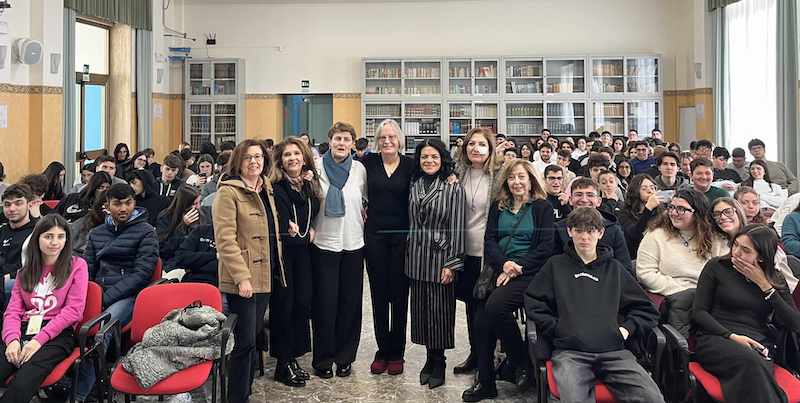
With the English students and teachers at Liceo Scientifico Leonardo Da Vinci
Following greetings and introductions, Teresa Scordino, the teacher who organized the event, launched the topic of the day, the Grand Tour in Calabria. Before living in Calabria, I was familiar with the concept of wealthy British, other northern Europeans, and even Americans, who struck out on cultural trips throughout Europe, beginning in the 17th century. Italy, with its fabulous antiquities and Renaissance treasures, was an important destination for these educational endeavors. It wasn’t until I lived in Calabria, however, that I learned of the experiences several writers had traveling in the region, the books or chapters thereof they wrote about Calabria, and in the case of Edward Lear and others, the artworks they created, as well.
Seeing a few of Lear’s Calabrian sketches hanging on walls in the Province of Reggio Calabria was just a dip of the toe into everything I would learn about the writers who visited the region and documented their journeys. My association with the Anglo-Italian Club of Reggio Calabria furthered the subject and for the presentation at Liceo Da Vinci in Reggio, I chose excerpts from the three classic books on Calabria by Lear, George Gissing and Norman Douglas, plus my Calabria: The Other Italy!
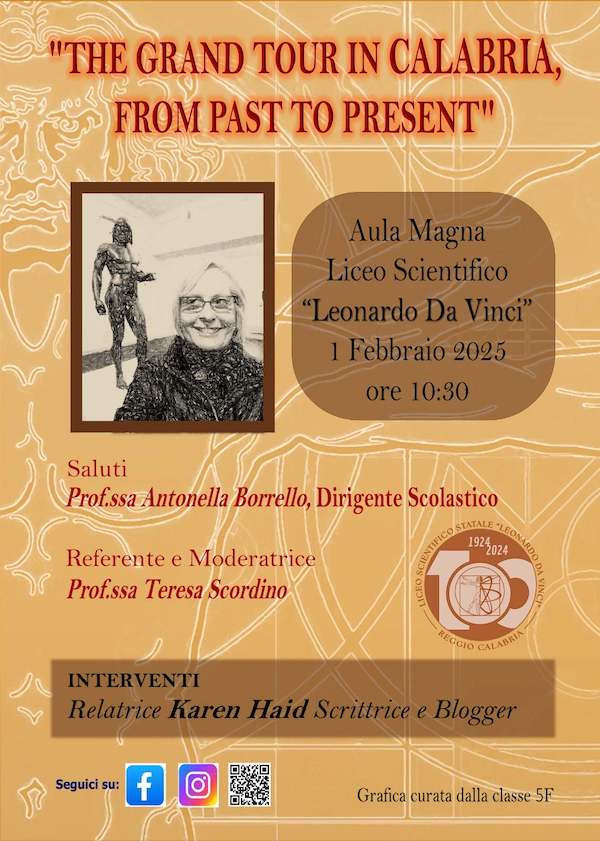
Presentation Flyer, Liceo Scientifico “Leonardo da Vinci” in Reggio Calabria
WRITERS AND ARTISTS IN CALABRIA
The most common Italian stops on Grand tour itineraries included Venice, Florence, Pisa, Rome, Naples and Pompeii. While Calabria was not part of any traditional itinerary, several writers and artists have traveled through the region and left beautiful accounts of their journeys.
Edward Lear, both writer and artist, said of Calabria in his Journals of a Landscape Painter in Calabria (1852): “This land of pictorial and poetical interest has had but few explorers; fewer still have published their experiences; and its scenery… has rarely been portrayed, at least by our own countrymen.” He spoke glowingly of the landscape, and below is his depiction of Reggio Calabria, which you can find at the Tate Britain in London. He sketched the city on his visit in 1847 and completed this oil painting in 1852.
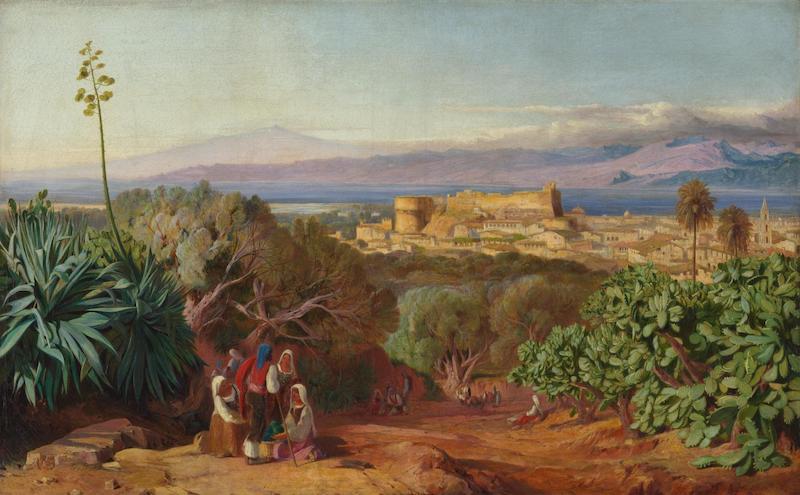
View of Reggio and the Straits of Messina by Edward Lear
George Gissing traveled along Southern Italy’s Ionian coast in 1897, ending his journey with these words in Reggio Calabria (from By the Ionian Sea: Notes of a Ramble in Southern Italy, 1901):
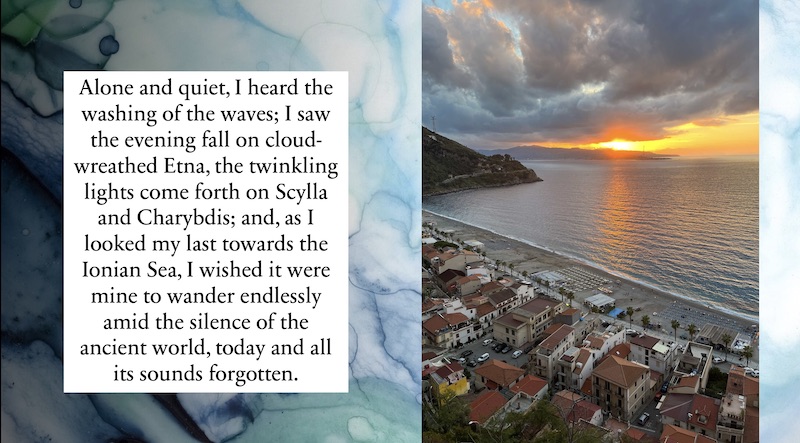
Quotation by George Gissing with photo of Scilla, Province of Reggio Calabria
Norman Douglas visited Calabria on several occasions, both before and shortly after the earthquake of Reggio and Messina in 1908. The devastation affected him deeply, and in the following excerpt from Old Calabria (1915), he tells the story of this great tragedy:
A young fellow, one of the survivors, attached himself to me in the capacity of guide through the ruins of Reggio. He wore the characteristic earthquake look, a dazed and bewildered expression of countenance; he spoke in a singularly deliberate manner…. Awakened from sleep with the first shock, he saw, by the dim light of the lamp which burns in all their bedrooms, the wall at his bedside weirdly gaping asunder. He darted to reach the opening, but it closed again and caught his arm in a stony grip. Hours seemed to pass—the pain was past enduring; then the kindly cleft yawned once more, allowing him to jump into the garden below. Simultaneously he heard a crash as the inner rooms of the house fell; then climbed aloft, and for four days wandered among the bleak, wet hills. Thousands were in the same plight.
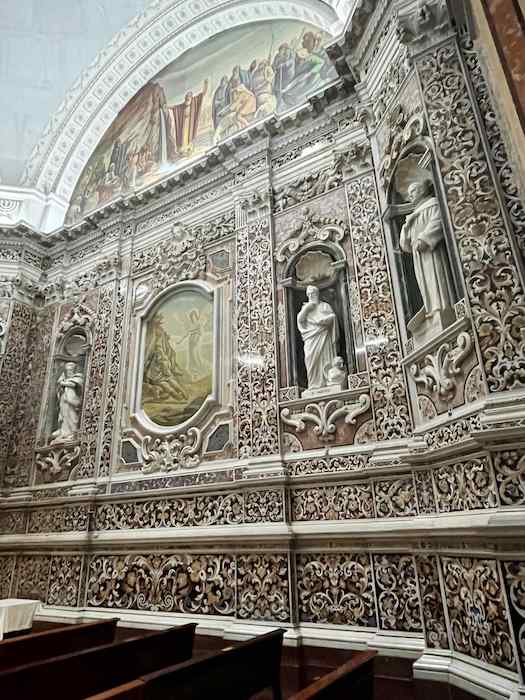
Baroque chapel in Reggio Calabria’s cathedral – this national monument in marble survived earthquakes – upon reconstruction, juxtaposed with 20th-century paintings by local artist Nunzio Bova
CALABRIA: THE OTHER ITALY by Karen Haid
I came on the scene about 100 years later. And when I arrived to Locri, it wasn’t lost on the people that I came from somewhere else.
I stuck out, not only wasn’t I from the area, I didn’t look Italian. Tall and fair – the tourists were all gone, so who was I and what was I doing there? Gradually, the brothers with the fruit and vegetable stand, the man planted at the entranceway to his perfume shop and others began to ask these questions.
“I’m American.” “Un’americana?” they’d respond inquisitively. I didn’t look anything like the Americans they knew, Aunt Teresa and Cousin Anthony. “You’re an americana americana!” they would exclaim. I was a real American. Where in America did I come from? “I was born and raised in New Jersey.” “BELLO!” An instinctive and completely different response from one you normally would hear in the states. Everyone had a relative or friend in the Garden State.
If nothing else, New Jersey tends to bring out strong feelings, one way or the other. I’m certain the students had good feelings for the Garden State.
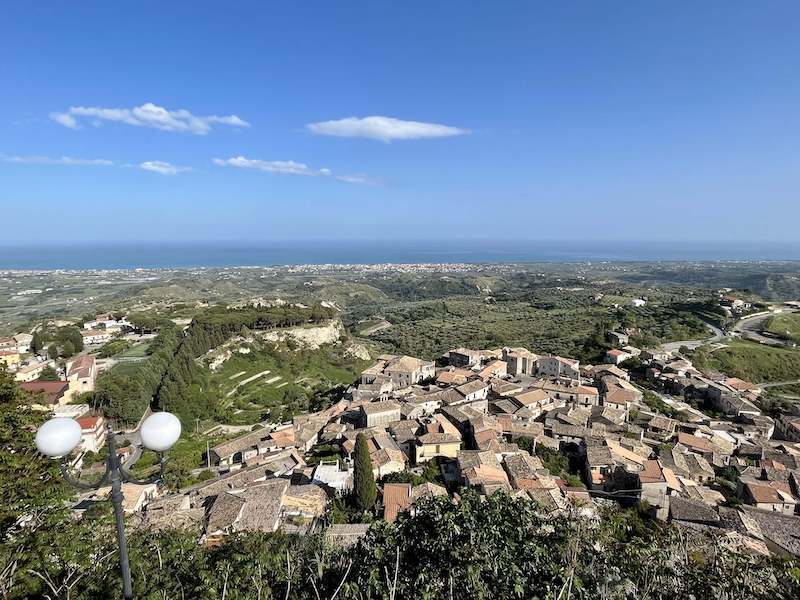
Looking out to Locri and the Ionian Sea from Gerace
During my presentation, I spoke about traveling in Calabria and highlighted places to visit. The students were intrigued with locations of which they were unaware.
STUDENT PARTICIPATION
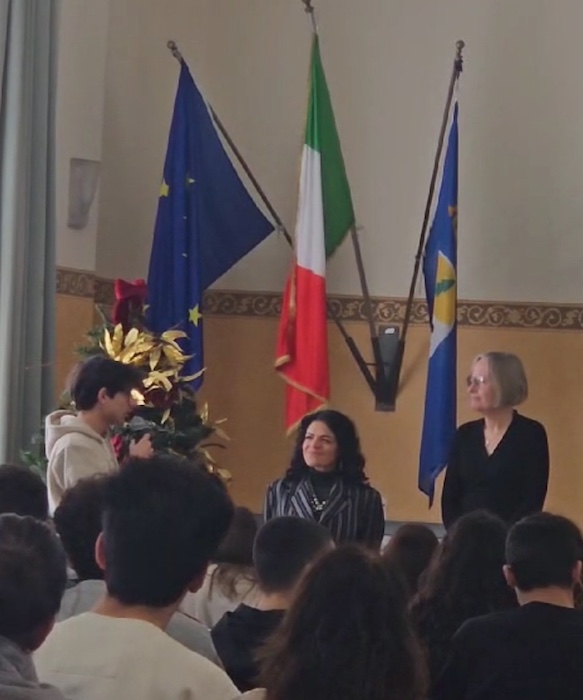
Student participation at the English-language cultural event at their school
When I finished my formal talk, many students asked questions. I will mention just a few. The first relates to perceptions:
What are some common misconceptions that American tourists have when coming to Calabria?
I would say that the biggest misconception is that people often don’t expect much and are unsure about visiting. For example, with my tours, there are many excellent reviews on TripAdvisor where former guests talk about how much there was to see, etc. Then, someone will sign up after reading the reviews, and during the course of the tour, will comment with surprise as to how much there was to see. It’s almost as if you have to keep hitting them over the head to get them to understand, because as I said before, everybody knows about the Amalfi coast and Sicily, for instance, but not about Calabria. So it’s more a case of, “the tree that fell in the forest that no one heard.” On the other hand, a misconception amongst Calabrians is that foreigners are thinking negatively of the region, because of course you hear about the ‘ndrangheta, but you hear about the mafia and other types of crime in many places, so it isn’t as much a focal point for tourists as locals may believe.
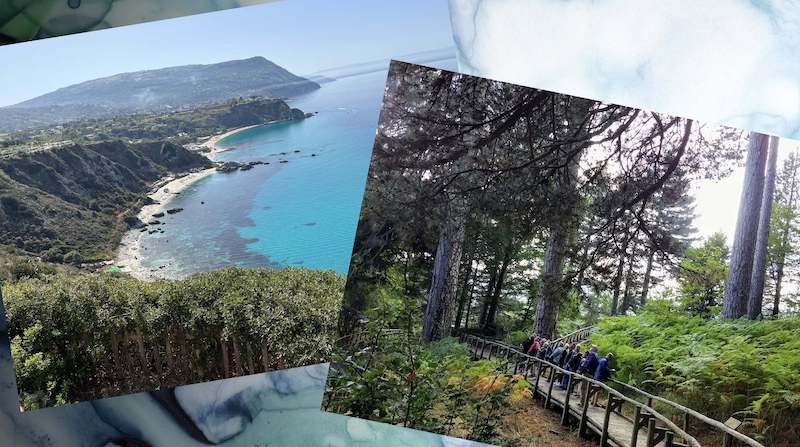
Capo Vaticano and the Giants of the Sila Mountains
Continuing in the vein of wondering what people think:
Have you received any feedback directly from Calabrian people or Italians in general? And if yes, what were their reactions regarding the book?
The feedback from Calabrians and other Italians has been very good. Many have thanked me for introducing them to places, and even food, that they weren’t familiar with. As the book is only in English at this point, the Italian audience is rather small, of course, but those who have read it like the honest portrayal of the region.
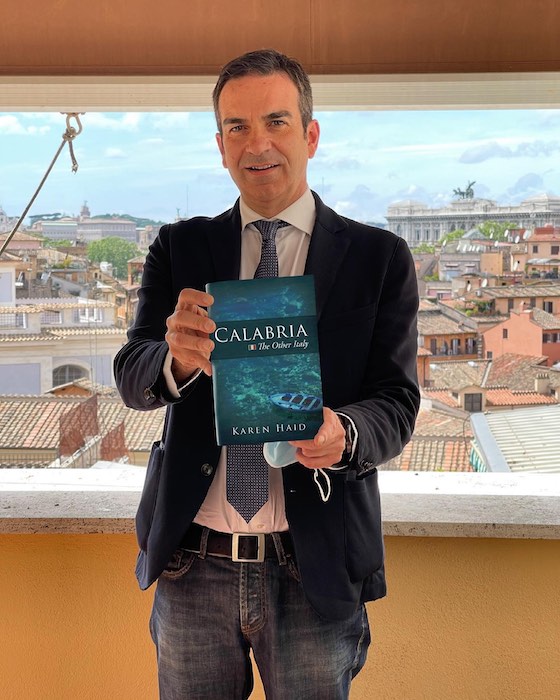
Roberto Occhiuto, President of Calabria, formerly member of Italian Parliament
GRAND TOUR IN CALABRIA AND QUESTIONS OF TOURISM
This past year, Reggio has experienced a noteworthy increase in tourism, in part due to RyanAir, a low-cost Irish airline, inaugurating many flights from Reggio to destinations throughout Europe. Expanding tourism has been a hot topic in local papers, and I received a few questions in that regard:
As overtourism is a great issue when we talk about visiting a city or a country, do you think that the enjoyability of Calabria depends on how uncontaminated it is from crowds, confusion, tourist traps, still being unknown by most of the people from foreign countries?
Absolutely. Overtourism has made visiting certain locations, particularly during warmer months, a challenge under the best of circumstances to downright unpleasant during high season. Calabria has always been just the opposite, which has left it fresh and enjoyable for the handful of tourists who have chosen the region for their vacation. Tropea and the surrounding area, for example, has always been a popular place as a summer beach vacation spot for Italians. Today, it’s more crowded and more difficult to get a reservation; however, nothing at all comparable to the masses of the Amalfi coast. My tour guests have always been delighted with the genuineness and purity of Calabria, from the natural landscapes to the food to the people. The traveler is able to experience Calabria with the calabresi.
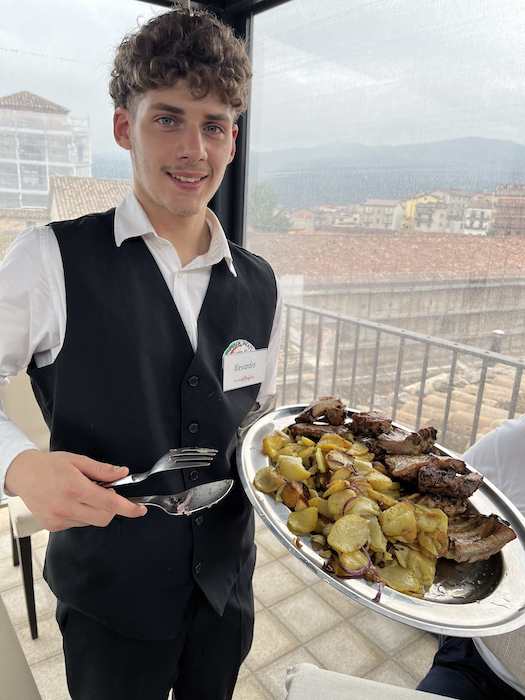
Warm Calabrian hospitality in a mountain town
Maybe you know Reggio Calabria has been candidate to be the Italian Capital of Culture for 2027? What do you think about this nomination and what could Reggio do to improve in the cultural field?
Reggio and the province are full of cultural assets. Of course, we think immediately of the Riace Bronzes and the world-class archeological museum. However, there are numerous other museums, churches, castles and architectural treasures, art ranging from ancient to folkloristic to contemporary, villages that are jewels within themselves, landscapes from seaside to mountain and an impressive culinary arts tradition. These assets need to be recognized and access facilitated. The city has already begun to take better care of its parks and streets, an endeavor that should extend to the outskirts. However, the biggest challenge will be the development of infrastructure, transportation and logistics of the great influx of visitors such a distinction would bring.
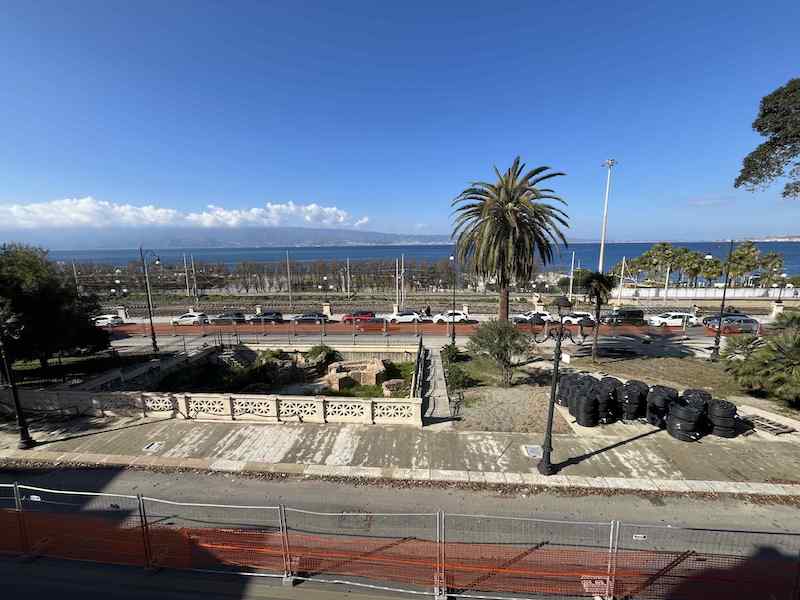
Renewing Via Marina in Reggio
There were too many questions to include them in this blogpost. All were thoughtful and posed by young people who demonstrated excellent English language skills. Throughout the presentation, the students showed great interest in my dedication to their homeland. They were pleased to see photos of their region and hear the impressions of visitors to their city and region.
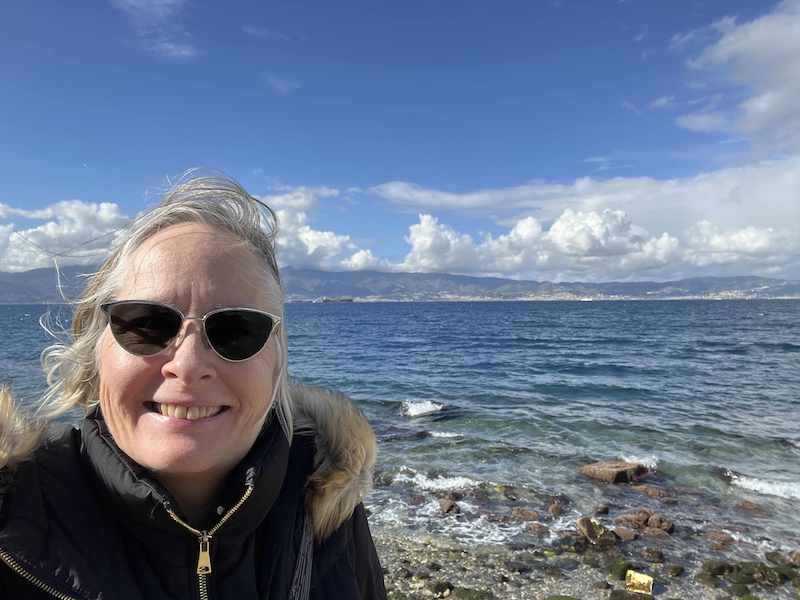
The author enjoying Reggio Calabria in the winter
Would you like to take a Grand Tour in Calabria? There are just a couple spots left for this year’s Calabria Tours – don’t miss out! Or join me on a Basilicata Tour.
Read about the fascinating Calabrian region in my book Calabria: The Other Italy, described by Publisher’s Weekly as “an intoxicating blend of humor, joy, and reverence for this area in Italy’s deep south,” and explore Calabria’s northern neighbor in my book Basilicata: Authentic Italy, “recommended to readers who appreciate all things Italian” by the Library Journal.
Follow me on social media: Basilicata Facebook page, Calabria: The Other Italy’s Facebook page, Karen’s Instagram and Karen’s Twitter for beautiful pictures and information.
Sign up below to receive the next blog post directly to your email for free.
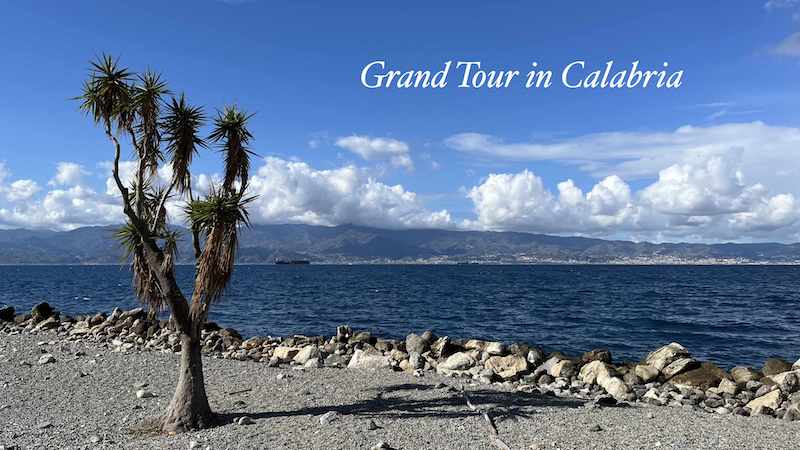
Comments 16
Do you visit Catanzaro and Davoli on your tours?
Grazie!
Author
As Calabria has 404 municipalities, we can’t include them all. For a group, the itinerary needs to appeal to the widest audience. I can tell you that the selection isn’t easy, but my guests have always been very pleased with all of the itineraries, and many have Calabrian roots. Travelers who would like to visit their ancestral homeland usually add on a day or two before or after the tour. Sometimes it works out that a participant has been able to see their village or meet with a relative on a free evening. My tours hit on all of the provinces, including Catanzaro, and we have stayed at Catanzaro Lido on past tours.
Thanks Karen for recapitulating this talk. I read Gissing, Douglas, and Lear on my travels in Calabria in 1982 when I visited with my parents. My father and his ancestors are from a small village near Locri named Cirella. I was there in 1988, so it is time for another visit.
You mention the great earthquake of 1908. I am attempting to validate an earthquake that destroyed Cirella, and some of my cousin emigrants to Australia tell me it was called by another name, Barbitano.
I have documented earthquakes in Southern Italy/Calabria in 1683, 1783, but in maps at David Ramsey’s map collection at Stanford University, I cannot find the place name “Barbitano”
I need to do some further research in the Archivi di Stati, but wondering if you have ever heard mention of earthquakes destroying entire villages then being renamed?
Thanks as always..
Author
It’s possible that there was a name change, such as after an earthquake, after Italian unification, etc. The Cirella that is better known is the frazione or district of Diamante in northwest Calabria.
Yes. there are two Cirella in Calabria. One in the province of Cosenza and the other in the province in Reggio. I think it was earlier pre- Napoleonic, as my vital records searches in il Portale Antenati identify the frazione of Cirella, part of Benestare, and sometimes refer to Plati. Thanks for the suggestion tho. I will continue the search.. I need an early 18th century gazetteer.
Author
There seems to be conflicting information about when the Cirella neighborhood in the Province of Reggio changed its name. According to Wikipedia’s Benestare page: With the administrative decree of May 4, 1811, municipalities were established and Benestare gained municipal autonomy from Bovalino, also having jurisdiction over the Village of Careri and the Casale of Cirella. This arrangement was confirmed with the return of the Bourbons in 1816; a few years later, a royal decree of July 18, 1836 detached Careri from the government of Benestare and joined it with Natile, which was established as an autonomous municipality. Instead, Cirella continued to be a hamlet of the Benestarese municipality until after the Unification of Italy, when in 1875 it joined the municipality of Platì, on which it still depends.
Thanks for this interesting recap of the talk you gave. Having taken one of your tours, I love reading your blog and remembering the sights, smells, foods and smiles of my trip to the land where my Palmieri grandparents originated. Your tour gave me tremendous exposure to all of Calabria, and yes, there was never a dull moment!!
Author
Very pleased you so enjoyed our tour and that my blog brings back such good memories, plus lots of laughs!
Always a pleasure to see your posts. A less well-known and earlier British traveler to Calabria was Craufurd Tait Ramage who in 1828 trekked through Campania and Calabria searching for ruins of the ancient Greek colonies. He was fluent in Italian and also recorded many of his encounters with the people and observations of folklore, etc. The modern abridged account is “Ramage in South Italy.” It’s an enjoyable read, and perhaps neglected because he never attained the fame of Lear, Gissing, or Douglas. Congratulations on your presentation and on the appreciation many Calabrians have shown for your devotion to their country and culture.
Author
Thank you, as always, for your informative comments, Alan. I’m pleased to have such an erudite readership.
Correction: Ramage was a Scotsman. A couple of slightly later British travelers, Keppel Craven and John Arthur Strutt, also wrote of Calabria, but I am not aware of there being any recent editions of their books.
Complimenti Karen! Sounds like your guest appearance was a hit with the students. I love the reaction ‘ah sei un Americana Americana’! Have you thought about translating your book into Italiano? What about a bilingual version, which would also serve as educational for improving Italian vocabulary and reading? Ciao, Cristina
Great suggestion for translation!!
Author
You can’t imagine how many times someone in Calabria has characterized me as an “Americana americana,” upon finding out I don’t have Calabrian roots! I’ve translated the book into Italian, just need to publish it. I think the whole book would be rather long as a bilingual version, perhaps excerpts. Good idea!
So glad you brought your characteristic humor and insight to your discussion with the students! Anyone on the fence about going on one of your tours should JUST DO IT because it will be the trip of a lifetime with such beautiful scenery, history and, of course, delicious food! We had a great time!
Author
So glad – thanks for your wonderful endorsement – I appreciate it!